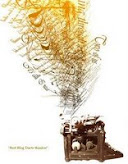I finally went to see the Philip’s Collection exhibit, From Degas to Diebenkorn, this weekend. It was kind of a mish-mash of art from the late 1800s to nearly the present, which was what I had expected. It was an exhibition of artwork that the museum has recently added to their collection. I did overhear some complaints from other museum goers. Some people felt that the name of the exhibit was misleading. They had come expecting more than just the one new Diebenkorn (in addition to those already in the collection) and more paintings by Degas. So take that as my warning to you. You will enjoy the exhibit if you know what to expect before you go.
So, I was at the museum, enjoying the artwork, and I kept seeing this word that I had never come across before: aquatint. I wrote it down so I would remember to look it up and share the information with you.
Aquatinting is a way to create prints. The artist first creates a design or image. Then he applies resin to a copper or zinc sheet. (Resin is that sticky stuff that gets on your hands when you touch certain types of trees, especially pine trees. It's made into many types of things including the stuff used by artists when creating aquatints.) Once the resin is applied, the artist dips the whole thing in acid. Dipping the plate in acid makes it so that it will print darker than white. After this first dip, the plate would print grey all over.
Next, the artist etches, or scratches, his picture onto the zinc or copper plate. These etched areas will print black. He also uses a special material that stops the acid from further darkening any parts that he wants to leave white (or at least light grey).
Finally, he dips the plate in the acid again, using the acid blocking material as areas reach the darkness he wants.
If you remember my post on John James Audubon, you remember a great example of aquatint printing. His book, Birds of America, used aquatint prints as illustrations. The water color was added after the aquatint printing which can only be done in black and white.
Francisco Goya was a master at aquatint. Pomona College Museum of Art in Cleremont, California as an excellent collection of Goya’s etchings. (I have never been to California. I am judging based on their website and other resources.) Go check out some of the images they have posted and read a little about the artist if you are interested. At some point I’ll post about him here.
Return to main page.
________________________________________
Current NaNoEdMo Hour Count: 9.5/50hours
Subscribe to:
Post Comments (Atom)








1 comment:
Your description of aquatint could do with some more particular description. The resin is typically powdered and then dusted onto the plate through a variety of methods (it is not typically very sticky at this point). Aquatint is like a series of small dots or hills of resin that block the acid from the plate, while the pits created between them are etched down. It is this variation that holds ink - the deeper the pits, the darker the area will print. If you etched the whole plate without the resin, it would not hold ink at all, since you have merely leveled the plate down.
Heating the plate will cause the resin to melt and harden onto the plate, and it can be etched now.
You describe two different methods of getting line marks that are really not the same. Etching a line involves drawing through a "ground", a waxy substance that covers the plate, and then using the acid to make the line. Scratching a line is drypoint, where the artist literally takes a tool to the plate's surface - no acid required.
(Also the aquatint need not necessarily come first. It may be done over previously etched line work.)
Post a Comment